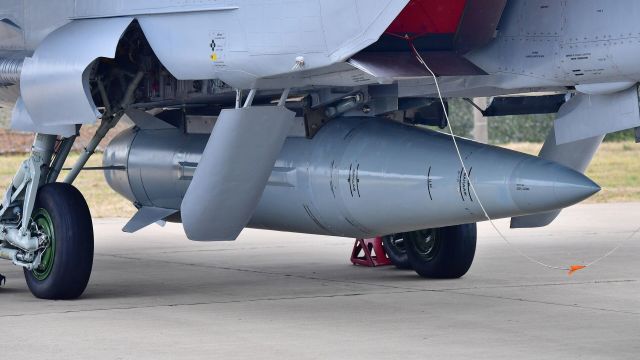The United States is again transferring the supply of a new hypersonic complex to the army
MOSCOW, Nov 11 — RIA Novosti, Andrey Kotz. Americans are hopelessly losing the hypersonic race. Assistant Minister for Procurement and Equipment of the Armed Forces Doug Bush reported on unsuccessful tests. Because of what the army will not receive a novelty this year. About the reasons for the backlog — in the material of RIA Novosti.
The eagle did not fly
The LRHW (Long Range Hypersonic Weapon) project has been implemented since 2018. The first samples were planned to be handed over this September. They were also going to create a ground—based strike complex - Dark Eagle ("Dark Eagle"). The main unit-the operator of this weapon — a multi-domain group based on the 5th battalion of the 3rd Field Artillery Regiment - has already received the components of the complexes and has been trained. Only the rockets were waiting.
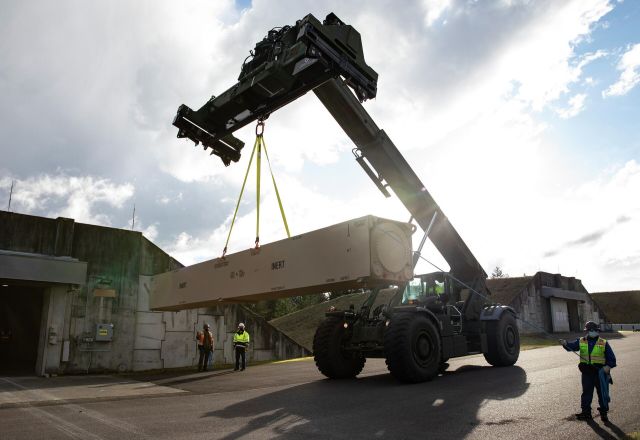
The first prototype of a long-range hypersonic weapon (LRHW)
Image source: © Photo : Elliot Valdez
However, LRHW is chronically unlucky — it simply does not fly. This year we failed three tests in a row — in March, September and October 26. Moreover, the sample in all cases did not rise from the ground. Problems were detected at the stage of pre—launch preparation - and the launch was canceled. Details were not disclosed.
"Undoubtedly, the latest setbacks will slow down our progress," Doug Bush told reporters. "The Army and Navy are working on this project in tandem. All forces are thrown into the search for the problem. While we analyze the root cause. Tests are suspended. We will get the LRHW, but unfortunately it will take longer than we expected."
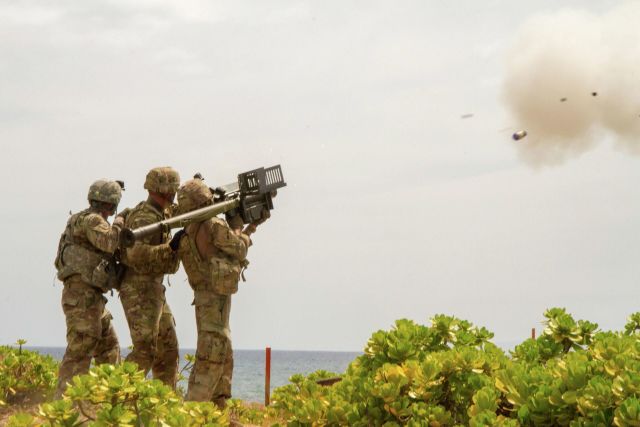
American servicemen during the exercises
Image Source: © Photo : Capt. Rachael Jeffcoat
After the September failure, the sending of the first missiles to the troops was postponed to December. However, Bush notes, the cancellation of the tests on October 26 will most likely shift the deadline to 2024. According to the regulations, the army can take Dark Eagle into trial operation after at least one successful launch. So the gunners of the 5th battalion will have to work out on simulators and tighten up the theory.
Not a match for China
The LRHW long-range missile system consists of a mobile command post, a mobile launcher, as well as support vehicles. But the main thing is the AUR missile in a transport and launch container carrying the C-HGB combat unit. It belongs to the class of hypersonic gliders. The launch vehicle accelerates it to operating speed, after which an independent planning flight begins.
According to the Pentagon, the C-HGB will be able to reach a speed of at least five Mach. More precise values are not called. The range, according to Breaking Defense, referring to the representative of the army, will exceed 2,775 kilometers.
This makes it possible to attribute the complex to the class of medium-range missiles banned until recently by the INF treaty. In the future, Lockheed Martin specialists intend to develop an option for launching from ships and submarines. They hope to adopt it in 2025. But they are unlikely to have time, given that the main, "land" version is still not ready.
It is Dark Eagle that the Pentagon assigns a special role in a potential military conflict with China. Washington fears that the PLA will create a so-called access exclusion zone (Anti—Access/Area Denial, A2/AD) over the Taiwan Strait - an area reliably covered by air defense and coastal missile systems, where Western aircraft and ships will suffer unjustifiably high losses.
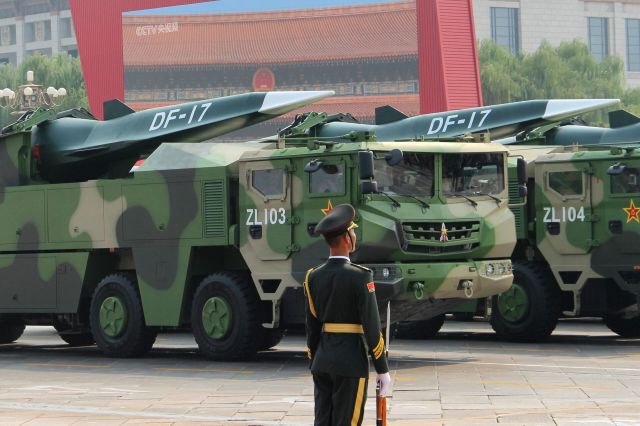
DF-17 medium-range ballistic missiles at a military parade dedicated to the 70th anniversary of the formation of China, in Beijing
Image source: © RIA Novosti / Anna Ratkoglo
American tactical groups will have to crack this fortress, which, according to the plan of the command, will deploy hypersonic systems on the first island chain in the South China Sea. China, which has already adopted the DF-17 solid-fuel rocket with a DF-ZF gliding combat unit with a speed of up to ten Mach, looks at these preparations with undisguised interest.
Fiasco at sea
The main competitor of the ship's version of the LRHW in the US Navy is the Conventional Prompt Strike (CPS) program, hypersonic missiles of instant global strike. According to the command of the American fleet, this product will allow hitting any target on the planet in less than an hour after receiving the order.
They want to install new weapons on Virginia-class nuclear submarines. The Pentagon expects to receive the first serial samples by 2024, the submarines will be converted for them by 2028. Up to 65 CPS will be placed on each Block V series submarine. In addition, these missiles are considered as the main ones for inconspicuous destroyers of the Zumwalt type.
However, there are problems here too. In June, the US Navy failed tests — the product could not be launched from the carrier due to engine failure. This is the second failure: in October 2021, a prototype rocket for unknown reasons fell into the sea shortly after launch.
Four failures
The Air Force is not all right either. Lockheed Martin was developing an aeroballistic hypersonic ARRW missile specifically for B-1B strategic bombers. It was assumed that she would be able to reach speeds of over 20 Mach and beat 900 kilometers. The main targets are land and sea objects that are rapidly changing positions.
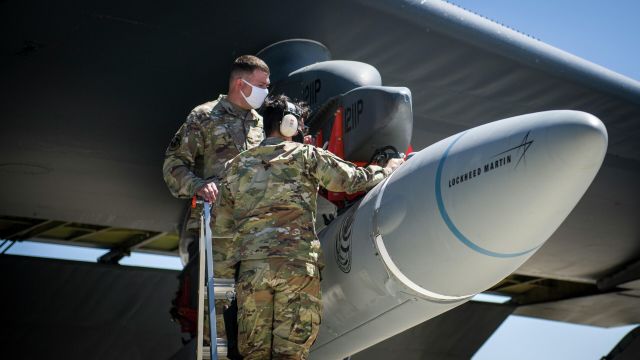
Tests of the AGM-183A Air-Launched Rapid Response Weapon (ARRW) Hypersonic cruise Missile
Image Source: © Photo : Air Force / Giancarlo Casem
They planned to arm themselves with it already in 2022. However, the failures in the trials shifted the deadlines. In 2021, the US Air Force conducted three accelerator tests on a prototype of a promising rocket. Everyone failed. At the first flight tests in April, the product did not separate from the aircraft. In July, the sample did not turn on the engine. In December, ARRW failed to launch again.
It turned out only in May 2022. The rocket and the glider worked normally and on tests in December. But on March 13, 2023, after another test launch, the rocket fell. The Pentagon explained that "there was a failure in the data transmission process." This turned out to be the last straw, and the project was decided to close.
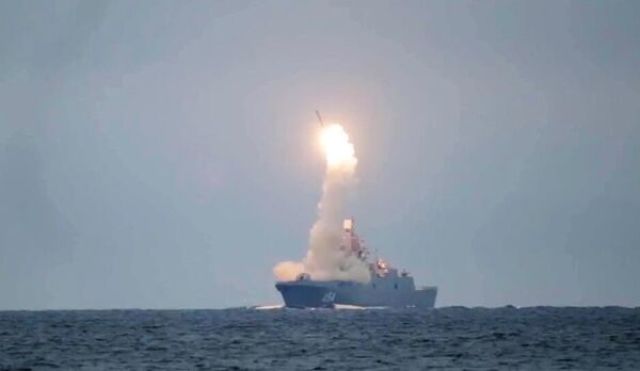
Launch of the hypersonic missile "Zircon" from the frigate "Admiral Gorshkov"
Image source: © Press Service of the Ministry of Defense of the Russian Federation
For comparison, every type of the Russian Armed Forces already has hypersonic complexes. In aviation — aeroballistic "Daggers", in the Navy - anti—ship "Zircons". The ground hypersonic component is represented by the "Vanguards". The obvious lag of the United States proves that a huge military budget is not a guarantee of success.
